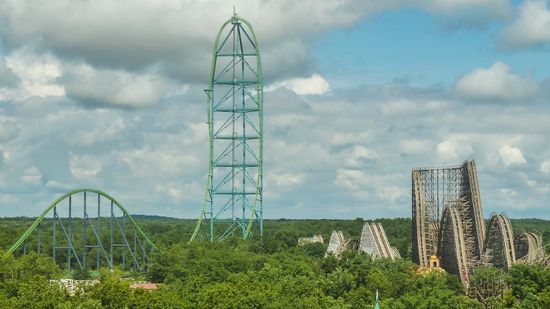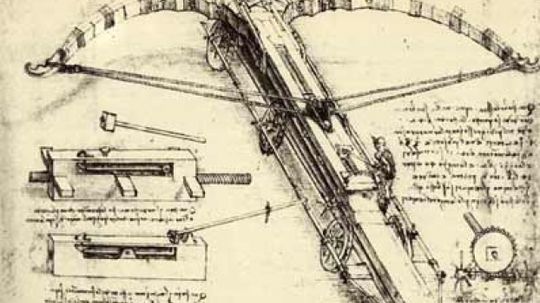Devices
Ever wondered how that thing works? Explore the inner workings of many common devices and inventions, as well as those that aren't so common, such as compasses, gyroscopes and bug zappers.

The World's Most Awe-inspiring Glass Buildings

10 Innovative Architects to Watch

16 World-Famous Architects and Their Impact

The Steepest Road in the World, Plus 9 Rival Inclines

Here's Longest Bridge in the U.S., Plus 7 Runners-Up

What's the Hardest Wood in the World?

10 Types of Metal (and We Don't Mean the Music)

Are food-based plastics a good idea?

Your Thoughts Could Activate a Tiny Robot Inside Your Own Brain

How Star Wars Works: Fan-built Droids

Robot Pictures

What's the Scariest Roller Coaster in the World? 10 Contenders

The Tallest Roller Coaster in the World Stood for 19 Years

Tallest Building in the U.S. and 13 Other Stunning Skyscrapers
Learn More / Page 2
The crossbow, a weapon popular with Wookiees, vampire slayers and some modern hunters, looks like a cross between a bow and a rifle. Read about it's fascinating history and uses.
Ever heard of a little unit called a femtometer? Can you tell us how much you weigh -- in petagrams? We know you can't, so hurry up and start reading. We have work to do.
It's common knowledge that Thomas Edison invented the incandescent light bulb and the phonograph, but did you know he also developed concrete furniture and a phone to communicate with the dead?
Advertisement
Did you know that the Internet was originally invented for military purposes? It's true. So too were cell phones and the Humvee. In fact, many of society's biggest technology breakthroughs have been adapted for civilian use from their original military application. And when it comes to military technology, particularly weapons, there is no end to [...] The post 10 Crazy Military Weapons That Actually Exist appeared first on Goliath.
By Jack Sackman
If you've traveled recently, you probably raised your arms above your head and waited for a millimeter wave scanner to do its screening thing. During those 10 seconds or so, did you ever wonder exactly how the device produced your image?
Nope, these advanced imaging technologies are not the same. So whether you're concerned about privacy, safety or time as you're shuffling through the airport security line, we can tell you how these two types of scanners stack up against each other.
Wind tunnels are the unsung heroes of aerodynamics. Thanks to these breezy devices, we have safer planes, cars and space vehicles.They even provide some extreme fun for the adrenaline junkies among us. What's the deal with wind tunnels? Find out in this article.
Advertisement
That is, if you're under the age of 25 and your hearing's intact.
By Julia Layton
Windmills and wind turbines work on the same core principle to convert wind into energy, but one creates mechanical energy while the other creates electricity. Here's how they work.
First developed in the 1920s, Geiger counters still use the same basic technology to detect radiation, but today can be the size of a smartphone.
They keep our miles and miles of unruly cords untangled and out of the way. But how do they work?
Advertisement
Splish-splash is not the sound you want to hear when you're standing in front of a urinal. A new design is being touted as the answer to the splashless pee.
By Kate Morgan











